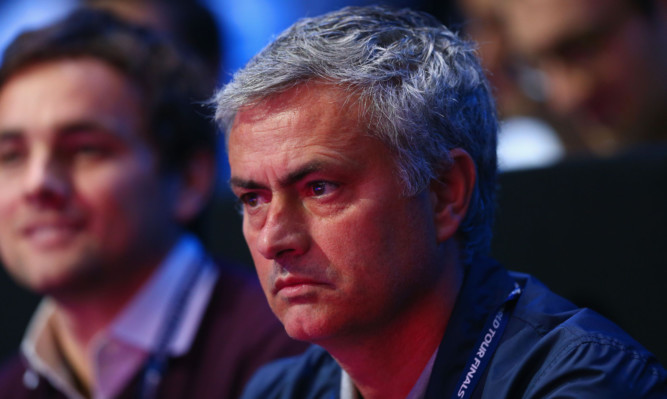
The Chelsea manager’s shrewd buys leave the rest in his wake.
Jose Mourinho could afford to put his feet up during the international break. The Premier League may be only 11 games old but already the title is his to lose.
Chelsea sit four points clear of unlikely challengers Southampton and eight points ahead of Champions Manchester City. Arsenal are 12 points adrift, Manchester United 13 behind, Liverpool, Everton and Tottenham all 15 points in arrears.
Mourinho’s team have already played four of their most difficult away matches two in Manchester and two on Merseyside and are still unbeaten. If Chelsea resume after the break in the same ruthless mood, they could have extinguished the life from the title race before the half-way mark.
But it’s not just that Mourinho’s team are playing well. It’s that the rest have been, frankly, rubbish!
City lost their hunger the last time they defended their title, and it looks like their appetite has gone again. Arsenal’s traditionally soft defence has looked even softer. United have been worse under Louis van Gaal than they were under David Moyes and Liverpool have been a shambles without Luis Suarez to bail them out.
Everton have failed to kick on after an impressive season, and Tottenham despite yet another change of manager are further away from the top than ever.
So how has Mourinho got it right when Van Gaal, Arsene Wenger, Manuel Pellegrini, Brendan Rodgers and the rest have got it so wrong?
You can start by looking at summer transfers. Mourinho had three specific targets a goalscorer, a creative midfield player and a left-back to replace Ashley Cole. He got them all, brought them in nice and early and they’ve hit the ground running. Diego Costa is the league’s top scorer and Cesc Fabregas arguably its most effective midfielder.
Contrast the Special One’s precision-guided transfer activity with the scattergun approach of the others.
Rodgers lost his best player for a lot of money, then spent it all and more on half-a-dozen who have contributed virtually nothing. Suarez scored 31 League goals last season. Mario Ballotelli and Rickie Lambert haven’t netted one between them. Highly-priced ex-Southampton players Adam Lallana and Dejan Lovren have made no impact. In fact, the defence Lovren was bought to organise has looked a mess.
Van Gaal was handed £150 million but seemed to have no plan other than to sign as many big-name forwards as he could, whether he needed them or not. As a result, United have been completely unbalanced, having to use kids and midfielders to shore up a defence which a year ago contained the reliable experience of Nemanja Vidic, Rio Ferdinand and Patrice Evra.
Similarly, Wenger strengthened his attack with Alexis Sanchez and Danny Welbeck, but completely neglected his defence, other than to replace Bacary Sagna with Mathieu Debuchy, who’s now injured. With skipper Thomas Vermaelen being allowed to leave too, one injury to Laurent Koscielny means Wenger has been playing reserve left-back Nacho Monreal at centre-half.
City are usually big players in the transfer market. But Financial Fair Play restrictions meant they were “only” able to spend £50 million. They made Eliaquim Mangala the most-expensive defender in English football at £32 million, but he’s looked completely out of his depth.
Everton signed Romelu Lukaku for £28 million doubling their record outlay and Gareth Barry, but as they were already there on loan it wasn’t like adding anything extra. Muhamed Besic and Samuel Eto’o are squad, rather than team, players.
The same applies at Spurs, where Ben Davies, Eric Dier, Michel Vorm, Federico Fazio and Benjamin Stambouli have all contrived to have virtually no impact.
The other main factor that has distinguished Mourinho from the rest is that he employs a midfield enforcer a position that is almost extinct in the English game. Nemanja Matic is 6ft 4ins tall and as strong as an ox. He breaks up attacks, feeds the ball players and is dominant in both boxes.
He must be good because Mourinho spent £21 million to get him back after the club had sold him to Benfica for less than £2m in 2011 after he’d played just two matches for them.
“The man is a giant,” says Mourinho. “Not for his size but for the way he plays.” None of the other title contenders have a player anything like the 26-year-old Serb.
Costa and Fabregas were great signings, but Matic is the most important player in the Premier League.
And he’ll win it for Chelsea.

Enjoy the convenience of having The Sunday Post delivered as a digital ePaper straight to your smartphone, tablet or computer.
Subscribe for only £5.49 a month and enjoy all the benefits of the printed paper as a digital replica.
Subscribe